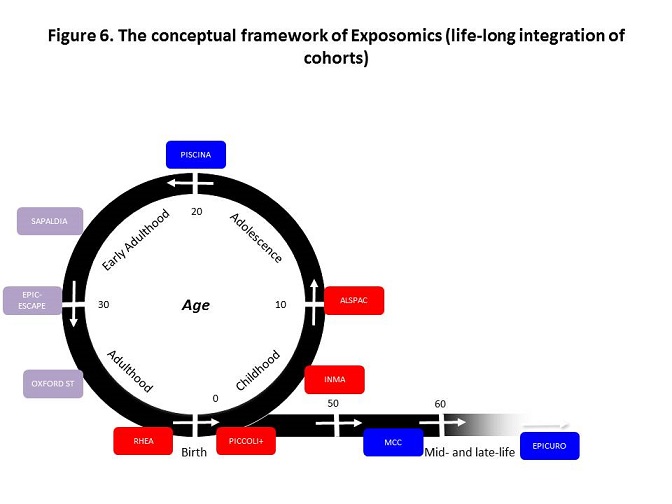You are here
Epidemiology & Burden of Disease
EXPOsOMICS is based on several cohorts that together mimic the life-course, encompassing all stages of life from birth to death.

Basic components of the EXPOsOMICS project
Phase 1
1. We have selected and integrated subjects, samples and data from three types of existing studies: Experimental Short-Term Studies (STS), Mother-Child Cohorts (MCO) and Adult Long-Term Studies (ALTS), between them reflecting all life stages from conception to old age.
2. We have measured the external exposome component for air and water contaminants by performing extensive, repeated Personal Exposure Monitoring (PEM). Fresh blood samples have been collected from all the individuals undergoing PEM, i.e. individuals in STS and those from a representative subsamples from MCO and ALTS, selected on the basis of contrasting exposures as estimated by traditional exposure assessment methods. In these samples, plus already stored samples of the recalled subjects from MCO and ALTS, EXPOsOMICS has conducted untargeted omic analyses. The aim is to look for new biomarkers of exposure to chemicals or mixtures and evaluate intra-individual variation of the internal exposome.
Phase 2
3. OMIC profiles were also measured in approximately 2,000 stored samples from MCO and ALTS, using untargeted analytical methods, with the aim of evaluating them as predictive of risk by examining their association with health effects, and also generating new hypotheses on disease etiology.
4. We combine external and internal exposome data, Land Use Regression models (LUR) and satellite data to calibrate air pollution exposure estimates (e.g. PM2.5, ultra-fine particles, black carbon) obtained using traditional methods in MCO/ALTS and use these refined estimates for risk assessment and burden of disease evaluations.

